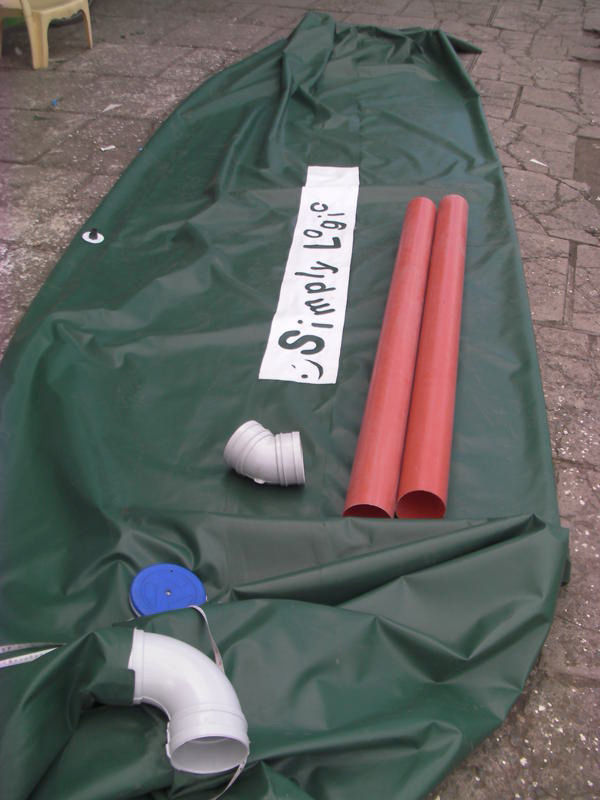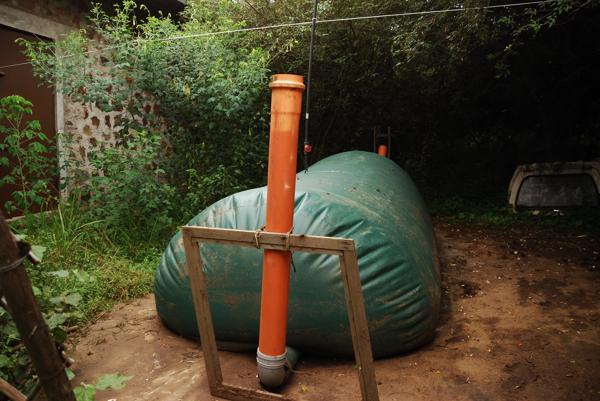

What is biogas?
Biogas is a clean fuel produced through anaerobic digestion of several organic wastes like agricultural, animal, domestic and industrial. Made from organic waste matter after it is decomposed, biogas is tremendously used as fuel. A relatively clean burning, colorless, and odorless gas, biogas is composed of methane (CH4), carbon dioxide (CO2), and some traces of nitrogen, ammonia (NH3), sulfur dioxide (SO2), hydrogen sulfide (H2S), and hydrogen, depending on the feedstock used.
Manufacturing Process
Biogas is produced in a no "oxygen is present" environment or in an anaerobic environment, when certain bacteria decompose organic material. The whole process is referred to as anaerobic digestion (AD). AD effectively treats the organic fraction of waste which has many benefits. The process not only leads to a healthy and clean environment, but also produces a renewable energy source like methane. The by-product produced during the process is a solid residue which is high-grade manure. In a biogas plant, biomass like vegetable wastes, animal excreta, and weeds undergo decomposition in the absence of oxygen and form a mixture of gases. This mixture is the biogas which is used as a fuel for cooking and lighting.
Types of Biogas Plants
- Floating gas-holder type
- Fixed dome type
- Bag type
A digester tank or a well is made out of concrete and it called the digester tank T, which has two parts: the inlet and the outlet. The inlet is from where slurry is transported to the tank, which has a cylindrical dome H made of stainless steel. This dome floats on the slurry and collects the gas generated. That is why such a biogas plant is known as floating gas holder type. Fermentation of the slurry takes for about 50 days. The pressure inside H increases when more gas is formed by bacterial fermentation. The gas is then transported out through outlet pipe V. The decomposed matter moves into the next chamber in tank T. By using the outlet pipe this is then removed to the overflow tank, which is used as manure for cultivation purposes.

Fixed Dome Type
Here also, a well and a dome are made out of concrete, which is called the digester tank T. Since the dome is fixed, this gas plant is known as fixed dome type. The manufacturing process is similar to the floating holder type bio gas plant, where the slurry expands and overflows into the overflow tank F.

The bag-type biogas plant is a portable unit. Made of rubberized nylon fabric, such a plant can be easily placed at any location. The appropriate type is selected on the basis of technical requirements like distance between kitchen and cattle shed, location, availability of dung and water, preferences of the beneficiaries etc.


"Media BAG" Domestic Biogas Plan
| Options | Cost (US$ ) | Time to install (days) | Labour | Maintenance | Durability |
| Fixed dome | 1,500 – 2000 | 21 | 5 people | Low | Decades |
| Floating top | 2,000 – 3,500 | 21 | 5 people | Low | Decades |
| Flexi bag envelope | 400 | 1 | 1 person | Low | 10 – 15 years |
| Fuelwood or LPG cylinders | 200 (per year) | 0 | 0 |
- Inlet pipe: The slurry is moved into the digester through the inlet pipe/tank.
- Mixing tank: The feed material like dung is gathered in the mixing tank. Using sufficient water, the material is thoroughly mixed till a homogeneous slurry is formed.
- Digester: Inside the digester, the slurry is fermented. Biogas is produced through bacterial action.
- Gas holder or gas storage dome: The biogas thus formed gets collected in the gas holder. It holds the gas till the time it is transported for consumption.
- Outlet pipe: The slurry is discharged into the outlet tank. This is done through the outlet pipe or the opening in the digester.
- Gas Pipeline: The gas pipeline carries the gas to the utilization point like a stove or lamp.
Important criteria for biogas plant construction are:
- The amount of waste material available for processing.
- The amount of gas required for a specific use.
- Cooking: One of the most common use of biogas is for cooking in a specially designed burner. A biogas plant with a capacity of of 2 m3 is enough for providing cooking fuel to a family of four to five.
- Lighting: Another use of biogas is lighting gas lamps. The biogas required to power a 100 candle lamp (60 W) is 0.13 m3 per hour.
- Power generation: This gas is also used to operate a dual-fuel engine. It can replace up to 75% of the diesel.
- A non-polluting and renewable source of energy is created in biogas plants.
- It is an excellent way of energy conversion.
- Biogas plants produce enriched organic manure. This can be used as fertilizers.
- Biogas as a gas provides improvement in the environment, and sanitation and hygiene.
- The biogas plants provide a source for decentralized power generation.
- Most important of all, such plants provide employment generation in the rural areas.
THE DA WILLIAM DOCUMENT
https://skydrive.live.com/#!/view.aspx?cid=AD7441E54BE074BC&resid=AD7441E54BE074BC%21491
RELATED LINKS
http://unapcaem.org/Activities%20Files/A01/Biogas%20technology%20for%20poverty%20reduction%20and%20sustainable%20development.pdf
THE COSTRUCTION VIDEO
http://www.savevid.com/video/how-to-construct-fixed-dome-biogas-digester-chunk-4.html
MORE ABOUT FIXED DOME
http://sleekfreak.ath.cx:81/3wdev/BIOGSHTM/APPLDEV/DESIGN/DIGESTYPES.HTML
the chinese container models .. best and cheap..
